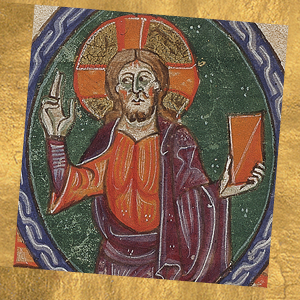St. Elizabeth Ann Bayley Seton, Foundress, Sisters of Charity of St. Joseph's

The New York socialite
Elizabeth Ann Bayley was born into a prosperous New York Protestant family in 1774, on the cusp of the American Revolution. As she quickly learned, material prosperity cannot fill the heart. After her mother’s death, her father remarried, but Elizabeth’s father and stepmother separated. Her stepmother rejected her and her sister, who were sent to live with her uncle. The child was deeply hurt by the rejection. The darkness lifted for a while in 1794, when Elizabeth married William Seton, a merchant who had a trading partner, Filippo Filicchi of Livorno, Italy. The Setons had five children. They were a fashionable, well-to-do Episcopalian family, but their good fortune did not last.
In 1801 William’s company went bankrupt. The couple lost their home, and William was struck with tuberculosis. In the hope that warm weather would help him, the couple and their oldest daughter set sail for Italy. William died shortly after their arrival, and Elizabeth found herself a widow at the age of twenty-nine. Suffering had opened the young woman’s heart, and she began to seek as one groping in the dark.
“If I seek God in the simplicity of my heart…”
Filippo Filicchi’s family was moved with pity for this young woman who had just landed in their country, only to be left widowed in a foreign land. They invited her to live with them for a time. As she grieved, they spoke to her of the consolation that their Catholic faith gave them in moments of suffering. Elizabeth was moved by their faith and began to ask questions. What did Catholics believe about the Eucharist? The Mass? The Mother of God, who seemed to them to be so near and tender a mother? Was there really an unbroken link between the Church now and the apostles? Her heart and her mind were in turmoil, but the turmoil soon gave way to peace. By the time she returned to New York in 1804, she had made her decision. In 1805, she entered the Catholic Church.
“…I will surely find him.”
That decision was not without cost. Her family disapproved. Elizabeth had started a small school in Baltimore in order to support her children, but once word got out that she had become Catholic, parents withdrew their children from the school.
The single mother of five would not have known where to turn, were it not for the Lord, whose will she sought in everything that happened to her. In 1806, she met Fr. Louis Dubourg, a Sulpician priest. The Sulpicians in Maryland had been discussing the possibility of a congregation of American religious sisters, modeled on the French Daughters of Charity of St. Vincent de Paul, to help with the education of children in the small but growing Catholic community. They invited Elizabeth and her children to Baltimore. Soon other young women joined her. In 1809, Elizabeth became the first of them to take vows.
Mother Seton
The small group of women, led by “Mother Seton,” arrived in Emmitsburg, Maryland in 1809. There, in that year, the Sisters of Charity of St. Joseph, the first congregation of religious sisters founded in the United States, had their beginning. The sisters opened a free Catholic school for impoverished girls – the beginning of Catholic education in that new country. The school was followed by an orphanage and countless other works of religious, educational and cultural formation for the poor. Mother Seton remained the sisters’ superior until her death at the age of forty-six. She had sought God, as she said, in the simplicity of her heart. He found her and drew her into the service of his Church. Her last words to her sisters, on January 4, 1821, were, “Be children of the Church, be children of the Church.”
Elizabeth Ann Seton was canonized in 1975, becoming the first person born in the United States to be declared a saint.








